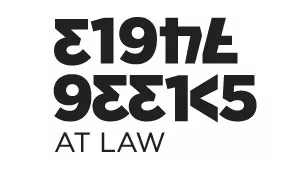- within Intellectual Property topic(s)
- in United States
- within Intellectual Property topic(s)
- in United States
- with readers working within the Advertising & Public Relations industries
- within Corporate/Commercial Law topic(s)
Legal Protection of Computer Software or Programs - Copyright
Computer programs (not software) have traditionally been protected as copyright work. Given that software differs from more traditional forms of copyright work (like songs and letters) from which it originally evolved, it has become necessary to assess whether copyright law in Ghana provides adequate protection for authors of programs and software.
Copyright in Ghana is governed by the Copyright Act, 2005 (Act 690) (the Copyright Act), the Copyright (Amendment) Act, 2009 (Act 788) and the Copyright Regulations, 2010 (LI 1962).
The Copyright Act lists the following works as entitled to copyright:
- literary work;
- artistic work;
- musical work;
- sound recording;
- audio-visual work;
- choreographic work;
- derivative work, and
- computer software or programmes.1
For a particular work to be copyrightable in Ghana, it must be original and must be expressed in a definite medium.23 The law of copyright does not protect ideas, concepts, procedures or methods but the form of expression of these.4 It must also be created by a citizen who is ordinarily resident in Ghana or first published in Ghana, or if published outside Ghana must be subsequently published within thirty (30) days of its publication outside Ghana.5
The copyright in a work gives the author the exclusive right to exploit the work for economic gain (economic rights) and the right to be named as author of the work (moral rights).6 The economic rights of the author are protected for their life and up to seventy (70) years after their death.7 In the case of joint authors, seventy (70) years after the death of the last surviving author.8 These rights may also be transferred and devolve by succession or operation of law.9
Copyright of Programs and Software in Ghana: Confusion in Classification and Definition
Protecting Computer Programs, Computer Software or Both?
Section 1 of the Copyright Act sets out eight different works as being works which are entitled to copyright protection (the Eligible Works). Despite a definition for seven of the Eligible Works, the Copyright Act omits to define what would amount to 'computer software or program' as provided for under section 1 of the Copyright Act. Notwithstanding this glaring omission, section 76 of the Copyright Act, sets out 'computer programs' whatever their mode or form of expression (one of the Eligible Works) as a type/subset of literary work (another one of the Eligible Works).
The classification of 'computer software or programs' in the Copyright Act creates confusion on two levels. Firstly, whether or not copyright protection in Ghana is granted to computer software or to computer programs or to both, which although used interchangeably are technically different. Secondly, it raises confusion as to whether 'computer software or programs' is a standalone category of work protected by copyright in Ghana.
A computer program is a set of instructions for a computer to perform a specific function and achieve a particular result which usually forms part of the creation of a software whereas a computer software is set of programs that enables the hardware to perform a specific task.10 Among their many differences, computer programs do not have user interfaces whereas computer software has user interfaces to enable interaction with the end user.11 Examples of software include Adobe Photoshop, Google Chrome, PowerPoint, Adobe Reader, whilst examples of programs include web browsers, word processors and video games.
It is settled law, internationally, that copyright protection is granted to computer programs and not to computer software. In the European Union, "computer programs" are what is protected by copyright and regarded as referring to the source code or, in its machine-readable form, object code.12 It is worth noting that the Agreement on Trade Related Aspects of Intellectual Property Rights (TRIPS), which Ghana has signed and ratified, protects computer programs, by stating that "computer programs, whether in source or object code, shall be protected as literary works under the Berne Convention (1971)".13 It however does not extend itself to computer software.
There is a lack of guidance on what amounts to 'computer software or programs' by the Copyright Act and the Ghanaian courts. If we were to assume that the Copyright Act, covers computer programs AND computer software, then TRIPS provides some guidance for what would amount to computer programs. However, there is no clear guidance under the Copyright Act for computer software. This lack of guidance potentially causes ambiguity as to what exactly is protected under Ghanaian law. Given that computer software may exist beyond the source code and object code, a clear statutory or judicial position is required to ensure fairness and transparency in the application of copyright to software specifically in Ghana.
Despite this lack of clarity on its ambit, a reading of the Copyright Act suggests that, the protection was meant for computer programs, though not defined, as opposed to computer software. There is no mention of computer software save in section 1(1) (h). All other sections of the Copyright Act refer to computer programs, (see references in sections 19 and 20 on fair use, and reproduction and adaptation of computer programs).14 It seems apparent that the protection under the Copyright Act was meant for computer programs (and not software), and even though not defined, it can be implied that the protection is for the source and object code in fulfillment of Ghana's obligations under TRIPS.
Ambiguous classification
Beyond a lack of a definition under the Copyright Act, there seems to be confusion over the classification of computer programs. 'Computer software or programs' is listed (alongside literary works) as a work eligible for copyright protection under section 1 of the Copyright Act. However, 'computer program' (and not software) is also included under the meaning of literary work under section 76 of the Copyright Act. The inclusion of computer programs as a subset of literary works whilst listed as the subject of copyright alone creates further confusion around the Copyright Act's position on computer programs and software.
This can be contrasted with the United Kingdom Copyright, Designs and Patent Act, 1988 in which computer programs are included as literary works and not a standalone work.15 Comparably, United States copyright law also provides for the protection of computer programs as literary works.16 The Indian Copyright Act also has similar provisions. It provides for the protection of computer programs as literary works and defines them as a set of instructions expressed in words, codes, schemes or in any other form, including a machine-readable medium, capable of causing a computer to perform a particular task or achieve a particular result.17 This is the same position under TRIPS as noted above and under the WIPO Copyright Treaty.18
From a reading of the Copyright Act, there is no justification provided for creating a new category of work eligible for copyright protection. Moreover, as Ghana is a signatory to the TRIPS Agreement, the WIPO Copyright Treaty and the Berne Convention, our national laws are to comply with their minimum standards for the harmonization of copyright laws around the world. 19 Consequently, this means copyright protection should be provided to computer programs as literary works and not as a novel category.
The misclassification further raises a question of what the effect would be in practice if computer software (having been omitted as a subset of literary work) was protected as a standalone category as opposed to as a literary work. It must be noted that computer programs are protected as literary work because the source and object code consist of letters, words, numbers etc. Coupled with a lack of definition in the Copyright Act, it can be argued that the legislature intended to create a new category of Eligible Work to protect all parts of the software as a whole rather than just the source and object code. Internationally and in other jurisdictions that protect computer programs as a literary work, the other components of computer software such as the graphics, animations etc. can be protected as artistic work separately from the source and object code if they meet the originality requirements.
If under our Copyright Act, software is considered as a new category, the likely conclusion would be that all parts of the software would be copyrighted as one, in the absence of a definition of software. This would however raise further questions. How then would the originality of the software be determined? The test for originality is simply that the work must be from the independent effort of the author.20 It must not be copied from another work but must originate from the author.21 Although copyright protects form/expression and not ideas, the test of originality may extend to the detailed pattern of ideas underlying the work, such that if they are replicated in a second work, that work would not be considered original even if its form/expression differs from the first work22. Would this same test be applicable in determining the originality of software? If so, would it be dependent on each part of the software? Is it possible then that some parts may be considered original while others are not? And if that is the case, would such software be copyrightable? In the absence of clear guidance from the legislature and the courts, this would lead to great confusion in the copyright protection for software in Ghana. Given this confusion, it would be prudent for the Copyright Act to be amended to reflect one of three options. Either that computer software also be protected as a literary work and not as a standalone category, or, that the different components be protected under whichever eligible work best describes them. For instance, the source and object codes could be protected as literary works, graphics and animations as audiovisual work etc. Alternatively, that computer software be protected as a standalone work with a specific standard or test to be used in determining its originality.
Computer programs and their preparatory design material: A necessary amendment to the Copyright Act?
If we accept that, the Copyright Act protects computer programs and not computer software then we must make an enquiry regarding the adequacy of its protection of computer programs.
The process of building a program is a fluid one and usually has many intermediary steps. It generally involves many stages leading to the development of the object code and source code. The process of building a program may include design documents relating to the program such as flow charts, graphs and functional or technical specifications. At this point, there is no actual code written yet. It is the next step to develop the source code based on the design and specifications. Ultimately, the source code will be compiled into object code at which stage we will have the final program that is capable of controlling the functioning of a computer and performing the desired functionality. As discussed above, it is settled in many jurisdictions that the source code and object code are protected under copyright. The question then arises what is the fate in terms of copyright protection for the intermediary materials developed during the preparatory steps on the road to the final program?
In 2009, Directive 2009/24/EC of The European Parliament and of The Council (the Directive) was passed for the protection of computer programs. 23 In recital 7 of the Directive, computer program was stated to include preparatory design work leading to the development of a computer program provided that the nature of the preparatory work is such that a computer program can result from it at a later stage. It is reiterated in Article 1, paragraph 1 of the Directive that "for the purposes of this Directive, the term 'computer programs' shall include their preparatory design material." Preparatory design material includes flow charts, specifications, tables, program listings, screen display, menu layouts etc.
The rationale for protecting preparatory design material is clear. Copyright protects the expression of ideas (which meets the requirements) as soon as the creative process commences. It is not contingent on the completion of the work.24 Thus, preparatory design material, which is almost complete (program), must also be protected by copyright. This enables developers to claim protection over their preparatory material whether or not it eventually becomes a computer program.
Under Ghanaian law, the Copyright Act does not define 'computer software or programs' neither does it include 'preparatory design material' as protected under copyright. Despite this however, can it be said that the Copyright Act sufficiently protects preparatory design material?
From the definition and examples of preparatory design material, it is clear that there would be parts of it that may be eligible for copyright protection under different works such as literary work, artistic work and audio-visual work. For example, drawings and prototypes may be protected as artistic work, program listings and manuals as literary work and any videos and animations as audio visual work. However, it would not be every part of the preparatory design material that may be considered a work (under section 1(1) of the Act) or considered original so as to be entitled to copyright protection. Thus, the protection under the Copyright Act would at best be minimal and at worst non-existent.
The lack of clear copyright protection for "preparatory works" for computer programs is another gap under the Copyright Act. Its inclusion into the Copyright Act is a necessary addition to provide a more holistic framework for copyright protection for computer programs and developers.
Conclusion
All in all, the Copyright Act makes some attempts to provide copyright protection for computer programs. The extent to which it may be applicable for computer software in of itself is not entirely clear.
The confusion around classification and definitions under the Copyright Act, coupled with the clear limitations on the extent to which copyright protection can be granted raises concerns. It has become increasingly evident that the Copyright Act will require amendments to ensure more certainty and predictability for copyright owners and the third parties that interact with them.
Footnotes
1 Section 1(1) of the Copyright Act, 2005 (Act 690)
2 Ibid., section 1 (2) (a) and (b)
3 The Copyright Act states that a work is original if it is the product of the independent effort of the author
4 Section 2 of the Copyright Act, 2005 (Act 690); George Bosompim and Nii Lante Kumi-Bruce vs. Tv3 Network Limited and Evans Kumi Wadewor [2016] DLHC 4262-45
5 Section 1(2) of the Copyright Act
6 Ibid., sections 5 and 6
7 Ibid., section 12
8 Ibid.,
9 Ibid., section 9
10 Pradeep Kumar (April 2023) Difference Between Program and Software https://www.tutorialspoint.com/difference-between-program-and-software#:~:text=Program%20and%20software%20are%20such,computer%20just%20like%20program%20does.
11 Sindra N (2023, July 2022) The Main Differences in Software vs Program in 2022 https://enou.co/blog/software-vs-program/
12 Bezpecnostni softwarova asociace (Intellectual property) [2010] EUECJ C-393/09 (22 December 2010)
13 Article 10 para 1
14 Section 12 is headed Reproduction and Adaptation of Computer Programs
15 See section 3(1) (b) of the Copyright, Designs and Patent Act, 1988
16 Brill, Jeffrey (1998). Computer Programs as Literary Works and as Modes of Operation: A Case Comment on Lotus v Borland. Chicago-Kent Law Review, 47(1) 289-341
17 Section 2(ffc) of the Copyright Act, 1957 (14 of 1957)
18 Article 4
19 Ghana acceded to the Berne Convention in 1991 and ratified the TRIPS Agreement in 2003 and the WIPO Copyright Treaty in 2006
20 Section 1(4) of the Copyright Act, 2005 (Act 690)
21 University of London Press, Limited v University Tutorial Press, Limited [1916] 2 Ch 601 per Lord Peterson
22 Pearson Education Limited v Morgan Adzei [2011] 2 SCGLR 864 per date-Bah JSC
23 https://eur-lex.europa.eu/legal-content/EN/ALL/?uri=celex:32009L0024 25/01/2024
The content of this article is intended to provide a general guide to the subject matter. Specialist advice should be sought about your specific circumstances.



